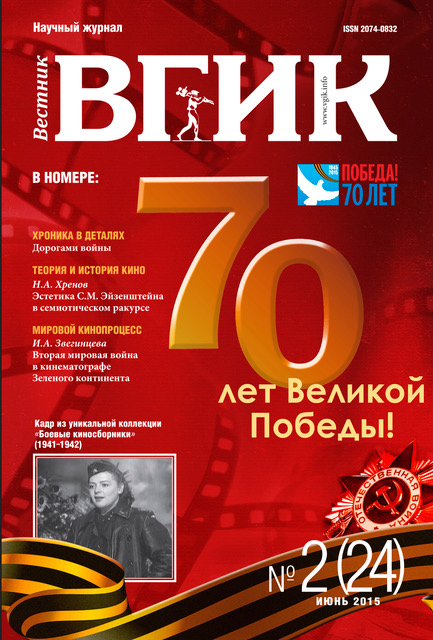Propaganda: Unity of Polemic Forms and Documentary Images in Russian TV
- Authors: Malkova L.Y.1
-
Affiliations:
- Moscow University
- Issue: Vol 7, No 2 (2015)
- Pages: 126-141
- Section: TELEVISION | DIGITAL ENVIRONMENT
- URL: https://journals.eco-vector.com/2074-0832/article/view/14800
- DOI: https://doi.org/10.17816/VGIK72126-141
- ID: 14800
Cite item
Full Text
Abstract
In 2014 the term «propaganda» came back into turn of speech of political talk-shows losing its negative connotations which had been supported by journalistic discourse in the second half of the 20th century. Talk-shows were filled up with sharp contents, live discussion transgressing the course prescribed by the script, foreign challenges forced to bring up some questions of domestic policy which had been avoided on TV till yesterday. The rigid binding of polemic programs to the news agenda allows to create on TV an intertext based on indwelling mental forms. Their visual filling and daily updating is assigned to news program. Discussion makes them abstract and verbally rationalized, allowing thought to develop, but the binding to news forces it to return to a topical event and serves as the polemic limiter in the hands of the anchor. The news transformed as well. Not only Sunday, but also weekday programs «Vremya» and «Vesti» in 2014 turned into analytical programs presenting news penetrated by figurativeness. Their broadcasters and reporters tend to metaphoric speech, the editing together of film shots and thematic blocks aims to provide a highly organized sensual image, expressive montage pervades the entire structure including composition. The news form exploded from within by the power of its content which dictated it to continue against the archaic half hourly time limit. The issues are often taken from the global screen context. Not only an extract from press but foreign TV news may be quoted in long original sequences combining shots with speech and then debated verbally and negated by the whole montage system of the program. Talk shows revealed the difference of ideologies and the ability of their protagonists to come to some sort of ideological consensus, dictated by political notions. Tied with the news agenda, they come as a component of propaganda. The basis of propaganda is repetition. The ideas expressed by the leadership of the country in live transmission get repeated again in record, reduced to a variable extent in newscasts the same day, next day, in Sunday news and analytical programs. Talk show hides the growing frequency of occurrence of these ideas in polemic disguise.
Keywords
About the authors
Liliana Yurievna Malkova
Moscow University
Author for correspondence.
Email: lilianamalkova@gmail.com
PhD in Art, Professor, Television and Radio Broadcasting Department (Faculty of Journalism)
References
- Вертов Д. Статьи. Дневники. Замыслы. - М.: Искусство, 1966. - 320 с.
- Дейк ван Т.А. Язык. Познание. Коммуникация. - М.: Прогресс, 1989. - 312 с.
- Йоргенсен М.В., Филлипс Л. Дж. Дискурс-анализ. Теория и метод. - Харьков: Изд-во «Гуманитарный центр», 2008. - 352 с.
- Малькова Л.Ю. Современность как история. Реализация мифа в документальном кино. - М.: Материк, 2006. - 224 с.
- Малькова Л.Ю. Социальное и документальное: противоречия отражения экранной жизни России / Социальные аспекты современного вещания в России. - М.: Факультет журналистики МГУ, 2014. - С. 86-97.
- Fowler R. Language in the News: Discourse and Ideology in the Press. - L., N.Y., Routledge, 1991. - 252 p.
- London S. How the Media Frames Political Issues. 1993 //URL: http://www.scottlondon.com/ reports/frames.html (дата обращения: 12.04.2015).
Supplementary files








